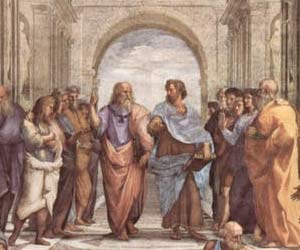The Aeneid
Select Format
Select Condition 
Book Overview
"Fitzgerald's translation] is so decisively the best modern Aeneid that it is unthinkable that anyone will want to use any other version for a long time to come." --New York Review of Books Virgil's great epic transforms the Homeric tradition into a triumphal statement of the Roman civilizing mission--translated by Robert Fitzgerald.
Format:Paperback
Language:English
ISBN:0679729526
ISBN13:9780679729525
Release Date:June 1990
Publisher:Vintage
Length:464 Pages
Weight:0.99 lbs.
Dimensions:0.9" x 5.2" x 8.1"
Customer Reviews
4 ratings
Aeneid epic.
Published by Thriftbooks.com User , 17 years ago
This epic is definitely a fun story. This verse translation was very accessible. It was easy to understand. This story should be read just as much as the Iliad.
Reader-Friendly Version of the Classic
Published by Thriftbooks.com User , 17 years ago
First, I'm not qualified to opine on whether Mandelbaum's translation is true to the Latin. I struggled with Virgil's complex poetry as a 4th year Latin student and have no idea if Mandelbaum gets it right. But this translation is eminently readable, retaining the feel of epic poetry. I have the feeling that any flaws in Mandelbaum's rendering reflect shortcomings in Virgil's original text. Second, this is a very handy edition, especially for the price. Even if you already own the Aeneid in other form, you might want to pick this one up. It is a pocket-sized paperback, yet the print is not tiny and is very readable. This is a better edition to bring with you on the plane than one of the bulkier versions. Plus, this edition provides an excellent glossary, which is an absolute must given the torrent of names that flow through this work. Finally, the Aeneid itself: Virgil is a literary titan, if only for his Georgics. The Aeneid is also a towering work, but troubling and flawed. Virgil himself was troubled by this work, which he left unfinished with instructions for it to be destroyed. In his effort to give Rome its own epic, combining features of both the Odyssey and Iliad to create the Aeneid, Virgil adopted some of the less interesting mannerisms of those older works. In particular, the battle scenes are violent, soaked in blood, long on smashed brains and decapitations and dripping entrails, short on exploring the pathos of life cut short for the sake of pointless conflict. It reads much like the Iliad, with seemingly endless lines of "A slew B and C slew D and E slew F." Maybe this was good stuff to an ancient Roman but to a modern reader it is boring in the same way as all the "begats" in some books of the Bible. Even more disturbing than the over-the-top, repetitive violence of the work is the sense of underlying pessimism, as every time reason and peace seem about to prevail, some god or goddess shakes things up and -- all too easily -- the killing starts anew. Maybe this reflected Virgil's own disgust with the times that he had lived through, with civil war erupting every few years until Octavian had finally killed off every other rival. But the rivers of blood that are spilled in the second half of the Aeneid do not make for as ennobling a foundation myth as perhaps Virgil was looking for. While Rome is destined for greatness, it is so because Jupiter has said so, has decided to favor Aeneas above his enemies, not because of anything inherently great about the proto-Romans. Maybe, had Virgil lived longer, he might have found a way to tweak this work to have Aeneas end up as more than just an executioner for Fate. And it is in the first half of the epic that Aeneas indeed is more than just a slayer. His romance with Dido is perhaps the most famous story within the poem and, although it is also marred by too much Olympian meddling, portrays Aeneas as possessing humanity and a capacity to love that is missing at the end. His descent int
I sing of a great story
Published by Thriftbooks.com User , 19 years ago
Roman society was enamoured of Greek culture -- many of the best 'Roman' things were Greek; the major gods were derivative of the Greek pantheon; philosophy, literature, science, political ideals, architecture -- all this was adopted from the Greeks. It makes sense that, at the point of their ascendancy in the world, they would long for an epic history similar to the Homeric legends; the Iliad and the Odyssey, written some 500 years after the actual events they depict, tell of the heroism of the Greeks in their battle against Troy (Ilium). The Aeneid, written by Vergil 700 years after Homer, at the commission of Augustus (himself in the process of consolidating his authority over Rome), turns the heroic victory of the much-admired Greeks on its head by postulating a survivor from Troy, Aeneas, who undergoes as journey akin to the Odyssey, even further afield. Vergil constructs Aeneas, a very minor character in the Iliad, as the princely survivor and pilgrim from Troy, on a journey through the Mediterranean in search of a new home. According to Fitzgerald, who wrote a brief postscript to the poem, Vergil created a Homeric hero set in a Homeric age, purposefully following the Iliad and Odyssey as if they were formula, in the way that many a Hollywood director follows the formulaic pattern of past successful films. Vergil did not create the Trojan legend of Roman origins, but his poem solidified the notion in popular and scholarly sentiment. Vergil sets the seeds for future animosity between Carthage and Rome in the Aeneid, too -- the curse of queen Dido on the descendants of Aeneas of never-ending strife played into then-recent recollections of war in the Roman mind. Books I through VI are much more studied than VII through XII, but the whole of the Aeneid is a spectacular tale. Books I through VI show Aeneas on the journey, and a failed love affair with Queen Dido. Aeneas is shipwrecked, and Dido (also an outcast from her homeland, setting out to found Carthage) gets Aeneas to tell her his story, in which he recasts the tale of the Trojan War and his own journey in terms that will lead to Rome. Gods and goddesses factor in here - Jupiter (the Roman Zeus) is protecting Aeneas, but Juno (the Roman Hera) favours Carthage, and is the one who caused the storm to shipwreck Aeneas near Dido so that he might be thwarted in his plan to found Rome. There is jealousy and rage because Aeneas eventually has to leave; Dido dies in a dramatic fashion, but not before her soul being given a blessed release by the favoured gods. The most dramatic part of the story over, the reader settles into other action that, while interesting, is somewhat pale in comparison to the first half. The Aeneid is a fascinating text, one of the greatest epics of the ancient world; it takes up the task of the Iliad/Odyssey cycle and 'updates', if you will, the story line into the Roman era. Pharr's book helps the reader to work with it in its original language, easily and
Solid rendering
Published by Thriftbooks.com User , 24 years ago
This is a very good English verse rendering of Virgil's classic. If you like epic poetry but can't read classical languages this translation is probably the next best thing. Though nothing compares to the original this is a faithful translation, and the verse makes for a more interesting presentation than prose.This is a "no frills" volume (hence the price), so it is best for readers who already know the basic premise of The Aeneid and the main characters. It has a basic glossary that may be a useful refresher for knowledge already acquired, but it lacks the translator's introduction that typically sets the stage (both for the plot and the poem's place in history) and triples the price in other volumes.
The Aeneid Mentions in Our Blog

Poetry Through the Ages
Published by Ashly Moore Sheldon • August 18, 2022
Poetry is one of the purest forms of expressing the human experience. It also offers a reflection of the era in which it was created. For National Poet’s Day on August 21, we celebrate the age-old artform with a tour of poetry through the ages.

Edward Gorey
Published by Phillip Caprara • February 16, 2022
Illustrator, author, animator, puppeteer, cartoonist, these are just a few of the titles that can be given to the talented Edward Gorey. Like many illustrators, Gorey has never been a household name. Despite this, however, his works have a devout cult following. You've likely come across them without realizing. Of all his oeuvre, nowhere is this combination of artistic style and fascination with the darker elements of humanity more evident than in his abecedaria.

Timeless Classics with Timely Updates
Published by Ashly Moore Sheldon • April 03, 2020
Getting young people to read old books can be challenging. One successful approach we’ve come across is to pair the original with a modern take on the story. Here we feature ten classic books matched with fun, updated retellings.






